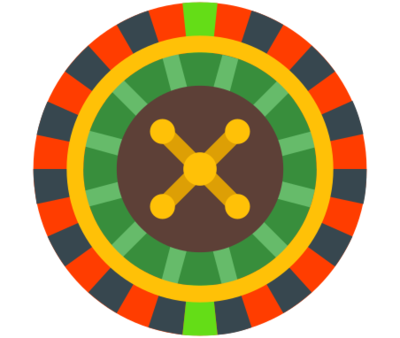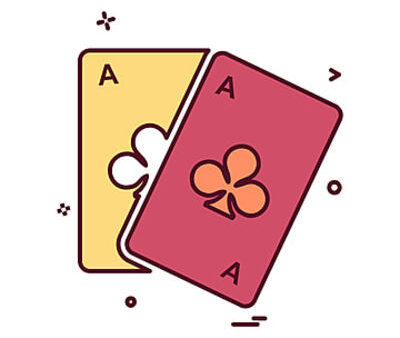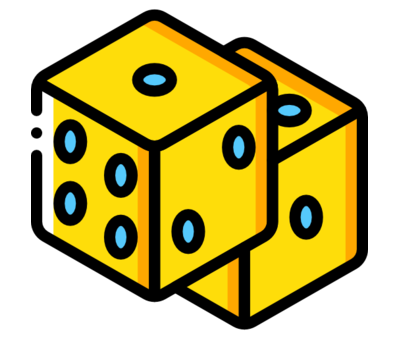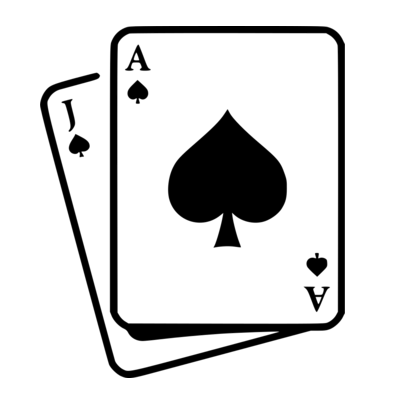
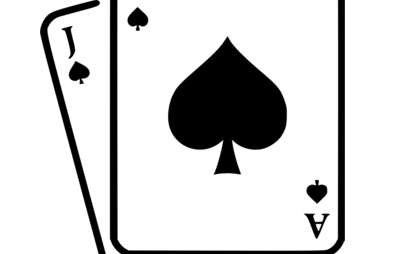
Blackjack, formerly Vingt-Un, is the American member of a global family of banking games known as Twenty-One, whose relatives include the British game of Pontoon and the European game, Vingt-et-Un. It is a comparing card game between one or more players and a dealer, where each player in turn competes against the dealer. Players do not compete against each other. It is played with one or more decks of 52 cards, and is the most widely played casino banking game in the world.
Blackjack Rules
Players are each dealt two cards, face up or down depending on the casino and the table. In the U.S., the dealer is also dealt two cards, normally one up (exposed) and one down (hidden). In most other countries, the dealer only receives one card face up. The value of cards two through ten is their pip value (2 through 10). Face cards (Jack, Queen, and King) are all worth ten.
Aces can be worth one or eleven. A hand’s value is the sum of the card values. Players are allowed to draw additional cards to improve their hands. A hand with an ace valued as 11 is called “soft”, meaning that the hand will not bust by taking an additional card. The value of the ace will become one to prevent the hand from exceeding 21. Otherwise, the hand is called “hard”.
Once all the players have completed their hands, it is the dealer’s turn. The dealer hand will not be completed if all players have either busted or received blackjacks. The dealer then reveals the hidden card and must hit until the cards total up to 17 points. At 17 points or higher the dealer must stay.
(At most tables the dealer also hits on a “soft” 17, i.e. a hand containing an ace and one or more other cards totaling six.) You are betting that you have a better hand than the dealer. The better hand is the hand where the sum of the card values is closer to 21 without exceeding 21. The detailed outcome of the hand follows:
- If the player is dealt an Ace and a ten-value card (called a “blackjack” or “natural”), and the dealer does not, the player wins and usually receives a bonus.
- If the player exceeds a sum of 21 (“busts”), the player loses, even if the dealer also exceeds 21.
- If the dealer exceeds 21 (“busts”) and the player does not, the player wins.
- If the player attains a final sum higher than the dealer and does not bust, the player wins.
- If both dealer and player receive a blackjack or any other hands with the same sum called a “push”, no one wins.
Blackjack has over 100 rule variations. Since the 1960s, blackjack has been a high-profile target of advantage players, particularly card counters, who track the profile of cards that have been dealt and adapt their wagers and playing strategies accordingly. In response, casinos have introduced counter-measures that can increase the difficulty of advantage play.
Blackjack has inspired other casino games, including Spanish 21 and pontoon.
2. Player choices
After receiving an initial two cards, the player has up to four standard options: “hit”, “stand”, “double down”, or “split”. Each option has a corresponding hand signal. Some games give the player a fifth option, “surrender”.
- Hit: Take another card from the dealer. Signal: Scrape cards against table (in handheld games); tap the table with finger or wave hand toward body (in games dealt face up).
- Take no more cards, also known as “stand pat”, “stick”, or “stay”. Signal: Slide cards under chips (in handheld games); wave hand horizontally (in games dealt face up).
- Double down: The player is allowed to increase the initial bet up to 100% in exchange for committing to stand after receiving exactly one more card. The additional bet is placed in the betting box next to the original bet. Some games do not permit the player to increase the bet by amounts other than 100%. Non-controlling players may double their wager or decline to do so, but they are bound by the controlling player’s decision to take only one card. Signal: Place additional chips beside the original bet outside the betting box, and point with one finger.
- Split: If the first two cards of a hand have the same value, the player can split them into two hands, by moving a second bet equal to the first into an area outside the betting box. The dealer separates the two cards and draws an additional card on each, placing one bet with each hand. The player then plays out the two separate hands in turn; except for a few restrictions, the hands are treated as independent new hands, with the player winning or losing their wager separately for each hand. Occasionally, in the case of ten-valued cards, some casinos allow splitting only when the cards have the identical ranks; for instance, a hand of 10-10 may be split, but not one of 10-king. However, usually all 10-value cards are treated the same. Doubling and further splitting of post-split hands may be restricted, and an ace and ten value card after a split are counted as a non-blackjack 21. Hitting split aces is usually not allowed. Non-controlling players may follow the controlling player by putting down an additional bet or decline to do so, instead associating their existing wager with one of the two post-split hands. In that case they must choose which hand to play behind before the second cards are drawn. Some casinos do not give non-controlling players this option, and require that the wager of a player not electing to split remains with the first of the two post-split hands. Signal: Place additional chips next to the original bet outside the betting box; point with two fingers spread into a V formation.
- Surrender (only available as first decision of a hand): Some games offer the option to “surrender” directly after the dealer has checked for blackjack (see below for variations). When the player surrenders, the house takes half the player’s bet and returns the other half to the player; this terminates the player’s interest in the hand. Signal: The request to surrender is made verbally, there being no standard hand signal.
Hand signals are used to assist the “eye in the sky”, a person or video camera located above the table and sometimes concealed behind one-way glass. The eye in the sky usually makes a video recording of the table, which helps in resolving disputes and identifying dealer mistakes, and is also used to protect the casino against dealers who steal chips or players who cheat. The recording can further be used to identify advantage players whose activities, while legal, make them undesirable customers.
In the event of a disagreement between a player’s hand signals and their words, the hand signal takes precedence. Each hand may normally “hit” as many times as desired so long as the total is not above hard 20. On reaching 21 (including soft 21), the hand is normally required to stand; busting is an irrevocable loss and the players’ wagers are immediately forfeited to the house.
After a bust or a stand, play proceeds to the next hand clockwise around the table. When the last hand has finished being played, the dealer reveals the hole card, and stands or draws further cards according to the rules of the game for dealer drawing.
When the outcome of the dealer’s hand is established, any hands with bets remaining on the table are resolved (usually in counterclockwise order): bets on losing hands are forfeited, the bet on a push is left on the table, and winners are paid out.

